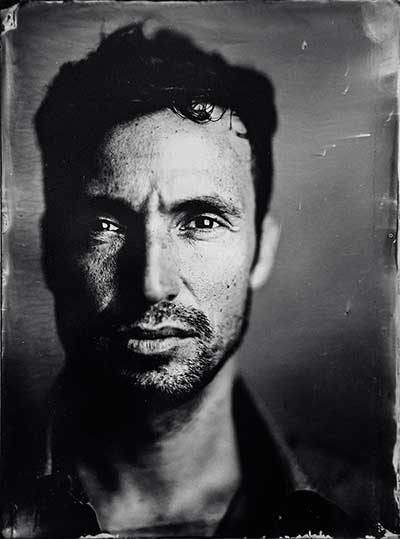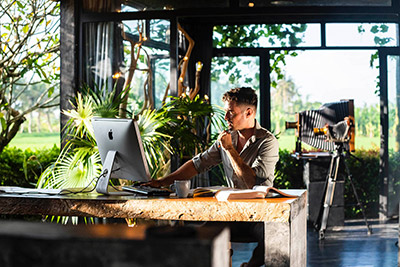 Prague born photographer, Stephan embodies the word versatile. He traveled the globe since a young age documenting adventures, shooting places and faces he met along the way. Since age of 20 he resides in Indonesia, which has since become his home. Voyage and exploration is in his core. For many years he traveled the archipelago shooting for brands, resorts and designers.
Prague born photographer, Stephan embodies the word versatile. He traveled the globe since a young age documenting adventures, shooting places and faces he met along the way. Since age of 20 he resides in Indonesia, which has since become his home. Voyage and exploration is in his core. For many years he traveled the archipelago shooting for brands, resorts and designers.
But over the time, with advance of digital medium, photography as a craft has changed. And for him lost the uniqueness it once had. After a long career in fashion and commercial photography, he decided to take a step back. ‘I had to take a step back from commercial photography, which has stopped full filling my soul.’ He felt like the time was right to take another turn. And Stephan decided to look the other way. Back to the old techniques. That’s when he first discovered Wet Plate Photography. This half forgotten process is a large format technique. It comes from 1850s, from the very beginning of photography. ‘From the first time it immediately amazed me. The results are so beautiful and different from anything else. During the developing process you literally see the image come alive. It’s like magic!’ He was hooked and obsessed. Decided to move out to a village to build his new studio. ‘I moved to the rice fields here in the Balinese village, focused on building my dream home.’
There he locked himself in the darkroom and tried to do what many found impossible: to bring the Wet Plate Collodion Process back to Indonesia. Something that hasn’t been done since 1860s when Woodbury and Page had their studios in Batavia - in that time Dutch East Indies. It was a long lost medium but he felt it could be done. Attending workshops in Europe and trying to find a way for this complicated chemical process in a tropical climate. ‘I wasn’t sure if I can succeed, but I just had to give it a shot.’ Wet plate photography is a complex chemical process where the reaction of light and silver creates a physical image. But in Indonesia, with tropical temperatures and humidity, it doesn’t work the same. Ether evaporates quickly and a whole chain of reactions changes. Turned out he didn’t really know what he was getting into. ‘It took me 5 years to really figure it all out.’ he laughs. Stephan had to rewrite old formulas to find one that would work for him. He also had to study chemistry and learn how to mix his own solutions. 'Before every shoot I need to prepare all the chemicals. Which is the hardest part.' he explains.
 After years of experiments he managed to get to image quality he is proud of. And along the way he feels like he found his niche, his purpose as an artist. ‘It feels like my whole life path led me here.’ he says. He fell in love with Indonesia many years ago documenting landscapes and cultures with digital camera. And now he is doing it once again. But this time he travels with his antique wooden camera and another hundreds of kilograms of equipment. 'In wet plate process you need to develop the image straight after the exposure. There’s only a few minutes to do it. So I have to bring a darkroom and laboratory with me to the field!' he describes the difficulties of the technique. His adventures are very much like first photography expeditions in the middle of 19th century. But he just loves the challenge and complexity of it. ‘Once you get a successful tintype, all the effort is paid off. It is just so beautiful and special!’ he adds passionately. A tintype really is needed to be seen in real life. The way the silver halides reflect light creates almost a three dimensional viewing experience. Unlike any other photographic medium. A tintype is a hand made image. Each exposure creates a one unique piece - a direct positive. More like a painting actually.
After years of experiments he managed to get to image quality he is proud of. And along the way he feels like he found his niche, his purpose as an artist. ‘It feels like my whole life path led me here.’ he says. He fell in love with Indonesia many years ago documenting landscapes and cultures with digital camera. And now he is doing it once again. But this time he travels with his antique wooden camera and another hundreds of kilograms of equipment. 'In wet plate process you need to develop the image straight after the exposure. There’s only a few minutes to do it. So I have to bring a darkroom and laboratory with me to the field!' he describes the difficulties of the technique. His adventures are very much like first photography expeditions in the middle of 19th century. But he just loves the challenge and complexity of it. ‘Once you get a successful tintype, all the effort is paid off. It is just so beautiful and special!’ he adds passionately. A tintype really is needed to be seen in real life. The way the silver halides reflect light creates almost a three dimensional viewing experience. Unlike any other photographic medium. A tintype is a hand made image. Each exposure creates a one unique piece - a direct positive. More like a painting actually.
His silver portraits of Indonesian people has quickly become a sensation in the art world. It seem like the medium really fits the subject. ‘This medium amazes me. I wanted to bring the past alive.’ He only has one goal now: to document the cultures of Indonesia. To preserve the beauty of the many traditions, ethnics and landscapes, on large format silver plates with unrivaled archival quality.
 Apart from Wet Plate, Stephan still shoots other techniques too. Including digital photography. For him it’s more about the concept and mood of a project. Then he picks the right medium and technique to capture the idea. He still keeps working on commercial projects too. 'But I can only work on my own ideas. Create my vision. So I only take on clients who give me a full control of the whole creative process. It’s the magic of photography when all the different elements come together in one perfect frame.' he explains. When not out on expeditions, he likes to spend time in his studio. There he experiments with low light photography, in-camera effects and conceptual set ups. To play with what’s possible. ‘There are things that digital sensor with high ISO sensitivity is just unbeatable at.’ he explains.
Apart from Wet Plate, Stephan still shoots other techniques too. Including digital photography. For him it’s more about the concept and mood of a project. Then he picks the right medium and technique to capture the idea. He still keeps working on commercial projects too. 'But I can only work on my own ideas. Create my vision. So I only take on clients who give me a full control of the whole creative process. It’s the magic of photography when all the different elements come together in one perfect frame.' he explains. When not out on expeditions, he likes to spend time in his studio. There he experiments with low light photography, in-camera effects and conceptual set ups. To play with what’s possible. ‘There are things that digital sensor with high ISO sensitivity is just unbeatable at.’ he explains.
Stephan’s art work is represented in private collections all around the world.
In his free time Stephan enjoys surfing, traveling and remote jungle adventures.